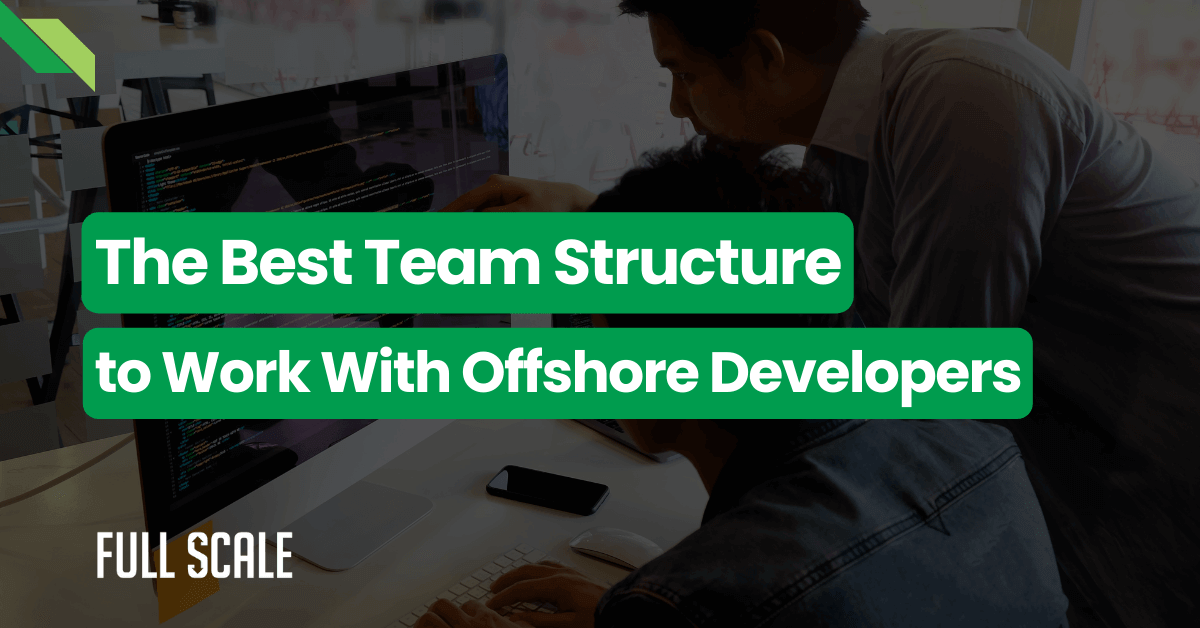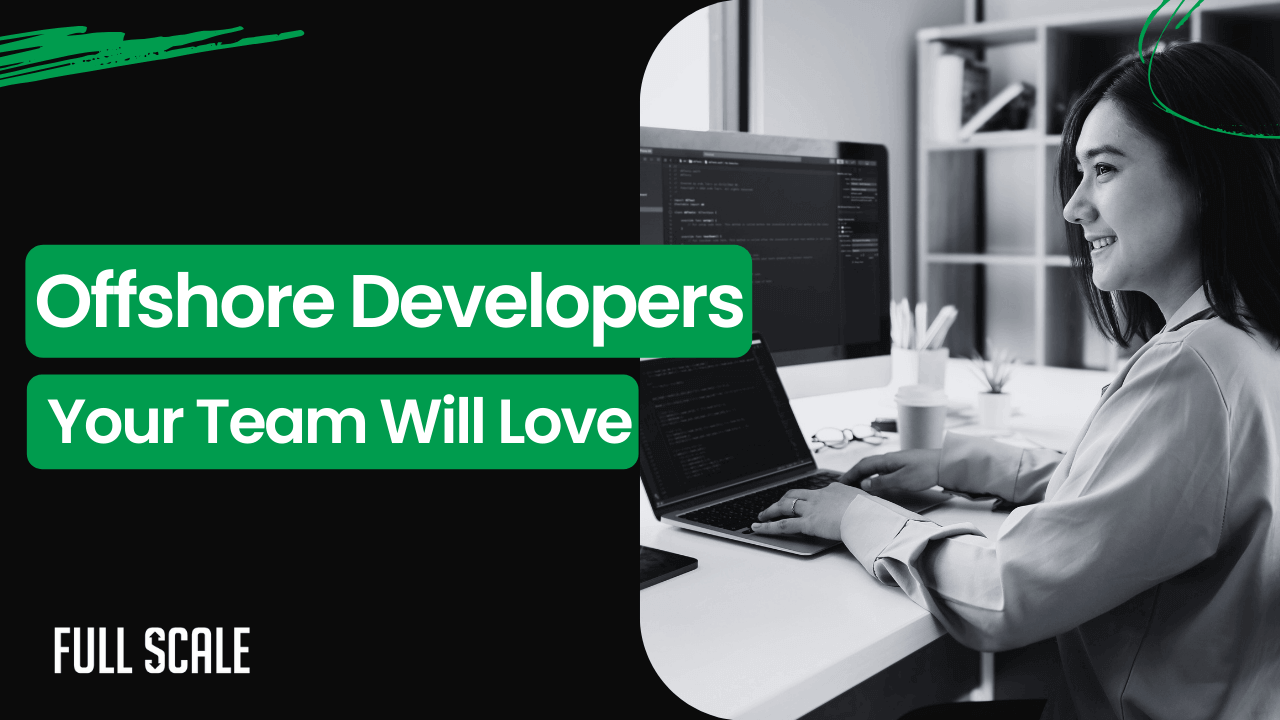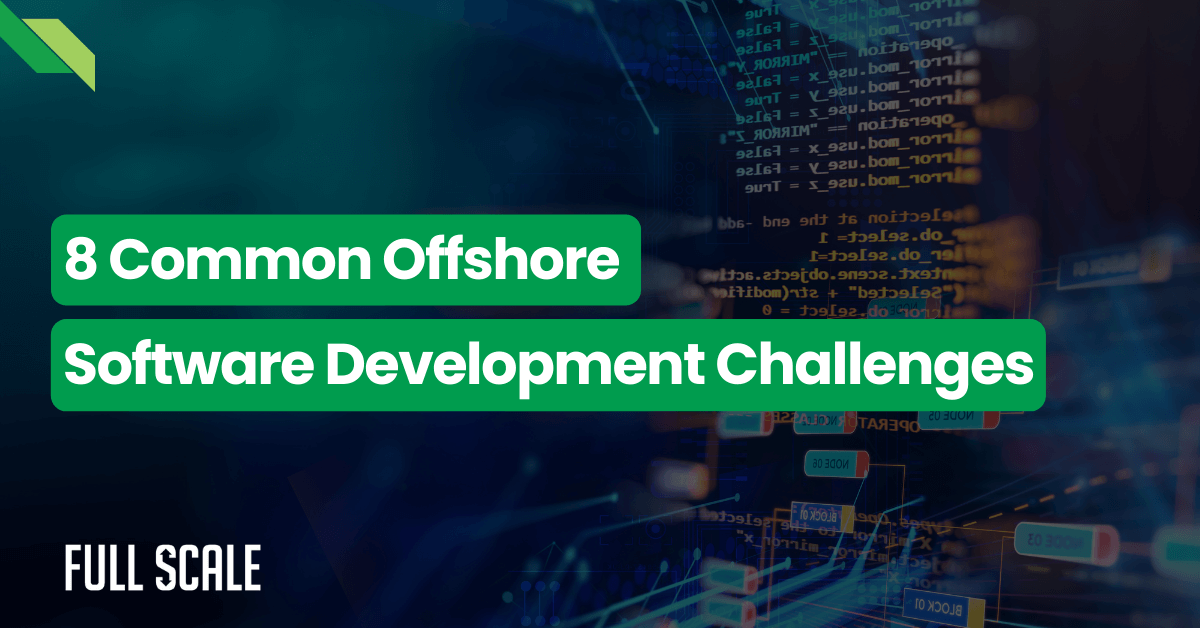Last Updated on 2025-10-19
Traditional hiring approaches seem logical on paper. Hire locally, take your time, find the perfect fit, pay whatever it takes. But this conservative talent acquisition strategy hides three massive costs that can sink your competitive advantage.
Let’s break down what playing it safe really means for your bottom line. These aren’t theoretical risks—they’re measurable losses happening right now. Proper hiring risk assessment starts with understanding these hidden costs.
The Price of Waiting: Opportunity Cost Nobody Calculates
The average time-to-hire for senior developers hit 44 days in 2024, according to LinkedIn’s 2024 hiring data. Add interview rounds, offer negotiations, and notice periods, and you’re looking at 90-120 days before a developer writes their first line of code.
The real impact of hiring delays:
- Each month of vacancy costs tech companies $75,000-$150,000 in delayed initiatives
- Four-month hiring process for three developers equals $900,000 in opportunity cost
- Competitors ship features and capture market share while you’re vetting candidates
- These hiring bottlenecks price you out of market opportunities permanently
Budget Overruns: The Salary Inflation Nobody Saw Coming
Software engineer salaries increased 25% between 2021 and 2024, per Stack Overflow’s 2024 Developer Survey. Your budget planning assumed one number, but the market demands another. Now you’re choosing between overpaying or leaving positions unfilled.
True hidden costs of local hiring:
- $180,000 senior developer salary
- $30,000+ in recruiting costs (20-25% of first-year salary)
- $15,000-$20,000 internal recruiting time
- Six months of delays before seeing output
- Total investment: $300,000+ before a single line of code
Annual raises of 15-20% for retention mean your “safe” local hire costs compound year over year. The budget predictability you thought you had evaporates in a competitive hiring market. This is why hiring risk assessment must include the total cost of ownership, not just base salary.
Scaling Bottlenecks: When Growth Outpaces Your Hiring Speed
Your business is growing 50% year-over-year, but you can only hire 10% faster. This gap between growth and team expansion creates software development team scaling risks that threaten every roadmap commitment.
The dependency crisis:
- Single points of failure multiply as you lean on the same people
- When your lead architect gives two weeks’ notice, entire projects stall
- Companies that can’t build team redundancy face catastrophic failures
- No amount of salary can make local hiring match the required velocity
Hidden Costs in Traditional Hiring Risk Assessment
Annual impact analysis for hiring 5 developers through traditional local hiring methods
| Hidden Cost Category | Average Impact Per Hire | Annual Impact (5 Hires) |
|---|---|---|
|
Time-to-Hire Opportunity Cost
|
$225,000 | $1,125,000 |
|
Recruiting & Agency Fees
|
$30,000 | $150,000 |
|
Salary Premium vs. Market
|
$45,000 | $225,000 |
|
Failed Hire Replacement Cost
|
$50,000 | $250,000 |
|
TOTAL HIDDEN COST
|
$350,000 | $1,750,000 |
What This Means for Your Hiring Risk Assessment
These costs don't appear in your hiring budget but significantly impact your bottom line. The opportunity cost alone exceeds most offshore development contracts for an entire year. Based on analyzing actual hiring outcomes across 60+ tech company clients.
This table shows real costs that don’t appear in your hiring budget. The opportunity cost alone exceeds most offshore development contracts for an entire year. These numbers come from analyzing actual hiring outcomes across our 60+ tech company clients.
The Myth of Low-Risk Local Hiring
Let’s talk about what risk actually means in hiring risk assessment. Most CTOs define risk as “things that could go wrong with a candidate.” But real business risk is the probability of failure multiplied by the cost of that failure.
Local hiring feels safe because it’s familiar. You know the market, you’ve done it before, and everyone else does it this way. But familiarity isn’t the same as safety—and the data proves safe hiring decisions often create more risk.
Turnover: Local Developers Leave More Often Than You Think
The tech industry average turnover rate hit 21.7% in 2023, according to LinkedIn Workforce Report 2023. That means one in five of your “safe” local hires will leave within a year.
Compare that to properly structured offshore teams:
- Full Scale retention rate: 95%
- Industry average for local tech teams: 75-78%
- Offshore developers aren’t juggling competing offers every week
- They’re focused on building careers, not playing salary arbitrage games
"You're paying a 3X premium for less stability. That's not risk management—that's paying more for worse outcomes."
The math: Local developers cost 3X more than offshore equivalents but have 21.7% annual turnover vs. 5% with proper staff augmentation. Your hiring risk assessment should factor this in.
You’re paying a 3X premium for less stability. That’s not risk management—that’s paying more for worse outcomes. The offshore development risk vs. reward calculation isn’t even close when you factor turnover into your hiring risk assessment.
Predictability: What Offshore Delivers That Local Can’t
Why local hiring costs are unpredictable:
- Salaries jumped 25% in two years
- Recruiting fees increased as talent scarcity worsened
- You can’t predict what filling a position will cost six months from now
- Safe hiring decisions compound unpredictability
Why offshore staff augmentation offers certainty:
- Fixed, predictable costs regardless of market volatility
- No bidding wars or surprise salary demands
- No renegotiations every performance review cycle
- Build five-person teams in 2-4 weeks vs. 15-30 months locally
This visualization shows actual hiring velocity from our client data. The offshore approach reaches full team capacity in one-quarter of the time local hiring requires. This is the timeline difference your hiring risk assessment should account for.
The Real Risk: Inability to Execute When Opportunities Arise
Market windows close while you’re conducting fourth-round interviews. Boards and investors evaluate execution risk above all other factors. They’d rather see you deliver with a “risky” offshore team than miss targets with safe hiring decisions.
"The biggest risk isn't choosing offshore—it's being unable to deliver when opportunities arise."
Why this matters: Boards and investors evaluate execution risk above all else. They'd rather see you deliver with an offshore team than miss targets with local hiring. Include execution velocity in your hiring risk assessment.
The biggest risk isn’t choosing offshore—it’s being unable to deliver when opportunities arise. We’ve watched companies lose funding rounds because they couldn’t prove they could scale fast enough. That’s not a hiring problem—it’s an existential business risk that proper hiring risk assessment would have prevented.
What CTOs Get Wrong About Hiring Risk Assessment
Most hiring risk assessment frameworks miss the biggest threats. They focus on what could go wrong with a hire instead of what goes wrong by not hiring fast enough. This fundamental misunderstanding of risk leads to safe hiring decisions that create catastrophic outcomes.
GitLab’s 2024 Remote Work Report found that 86% of tech companies now consider geographic flexibility essential for competitive hiring—yet most still haven’t adjusted their talent acquisition strategy accordingly. Their hiring risk assessment hasn’t caught up with reality.
The Four Risks Traditional Assessments Ignore
- Time-to-Market Risk
- Your competitors aren’t waiting for the perfect hire
- First-mover advantage belongs to companies that can staff up fast
- A fintech startup lost a $2M deal because they couldn’t demonstrate team capacity
- Six months later, a competitor with an offshore team owned that market segment
- Safe hiring decisions cost them their market position permanently
- Dependency Risk
- What happens when your lead architect gives two weeks’ notice?
- Single points of failure multiply as you lean on the same people
- Larger offshore teams provide built-in redundancy, but local hiring can’t match
- When you can only afford three local developers, you have three critical dependencies
- Proper hiring risk assessment accounts for team redundancy needs
- Budget Flexibility Risk
- Fixed high-salary commitments become anchors when you need agility
- Month-to-month offshore contracts provide the flexibility that long-term salaries eliminate
- A SaaS company we work with shifted 40% of development resources between products in two weeks
- Their local team couldn’t pivot—those were permanent employees with fixed roles
- Strategic hiring risk assessment prioritizes adaptability
- Opportunity Cost Risk
- Every quarter spent on hiring bottlenecks is a quarter not spent innovating
- We helped a company realize they’d spent 14 months building an eight-person team
- In those 14 months, competitors launched three major features
- The safe hiring decisions cost them market leadership
- Their hiring risk assessment ignored the cost of inaction
These four risks compound each other. Time-to-market delays create dependency risks. Dependency risks lead to opportunity costs. Opportunity costs strain budgets. Most companies discover these connections too late because their initial hiring risk assessment was incomplete.
Calculate Your Real Hiring Risk Assessment
Here’s how to conduct a proper hiring risk assessment for your specific business. This calculator shows your actual costs and timelines for both approaches.
Use real numbers from your hiring experience. The results might surprise you—and give you the data you need for board presentations or stakeholder discussions.
Interactive Hiring Risk Assessment Calculator
Enter your current hiring metrics to see your real costs and timelines. Get your personalized hiring risk assessment in 2 minutes.
Local Hiring Approach
Offshore Approach
Your Potential Savings with Offshore
This calculator uses actual data from our client engagements. The offshore cost assumes 40% of local equivalent salaries. Opportunity cost calculations follow standard consulting methodology for delayed time-to-market. Use this for a comprehensive hiring risk assessment.
Why Staff Augmentation Changes the Hiring Risk Assessment
Staff augmentation isn’t project outsourcing or freelancer marketplaces. It’s a fundamentally different talent acquisition strategy that eliminates the risks of traditional offshore while keeping the benefits. This approach transforms your hiring risk assessment from “can we afford offshore?” to “can we afford NOT to scale faster?”
The Staff Augmentation Difference
What traditional outsourcing gets wrong:
- You work with account managers instead of developers
- You lose direct control over priorities and processes
- Teams feel disconnected from your culture and goals
- Safe hiring decisions lead you to avoid it entirely
How staff augmentation fixes it:
- Your offshore developers join your Slack channels and attend your standups
- They report to your technical leads and work within your sprint cycles
- They’re full-time dedicated team members who build careers with your company
- Proper hiring risk assessment reveals it’s actually a lower risk
Five Ways Strategic Offshore Reduces Your Risk
- Speed: Build five-person teams in 2-4 weeks instead of 15-30 months
- Predictability: Fixed costs with no surprise salary negotiations
- Scalability: Add or adjust team size as business needs change
- Stability: 95% retention rate vs. 75% industry average
- Flexibility: Month-to-month engagement without long-term commitments
This visualization compares actual risk factors from our client data. Each metric represents measurable outcomes, not theoretical projections. Include these factors in your hiring risk assessment.
The Proof: What Clients Actually Experience
We’ve helped 60+ tech companies scale from two-person teams to 12+ developers in months instead of years. A fintech platform needed to triple their engineering team for a major enterprise client. Local hiring would have taken 18 months minimum.
We built their offshore team in eight weeks. They shipped the product on time, won the contract, and kept all 12 developers for over two years—better retention than their local team achieved. That’s what proper hiring risk assessment reveals: the “risky” option delivered outcomes that the “safe” approach couldn’t.
Read more about some of our successful partnerships.
Stop Making Safe Hiring Decisions—Start Conducting Real Hiring Risk Assessment
Safe hiring decisions aren’t safe. They’re slow, expensive, and create the exact risks you’re trying to avoid. The data proves it across every metric that matters for business outcomes. Your hiring risk assessment should reflect actual business impact, not just perceived candidate risk.
Your competitors already figured this out. While you’re stuck in 90-day hiring cycles, they’re shipping features with offshore teams built in weeks. While you’re dealing with 20% turnover, they’re maintaining 95% retention through staff augmentation models. They conducted a proper hiring risk assessment and made the strategic choice.
The riskiest decision is the one that keeps you from executing when opportunities emerge. Every month you wait costs more than any perceived offshore risk. Every hire that takes four months delays your competitive positioning by another quarter. Traditional safe hiring decisions compound these delays.
You can keep following conventional wisdom and falling further behind. Or you can conduct an accurate hiring risk assessment and make the strategic move. The choice determines whether you’re leading your market or chasing competitors who made better decisions.
Partner with Full Scale for Lower-Risk Team Growth
Here’s why tech companies choose our staff augmentation model after conducting a thorough hiring risk assessment:
- Proven track record: 60+ tech companies scaled successfully with our teams
- Fast deployment: Build five-person teams in 2-4 weeks, not months
- High retention: 95% developer retention vs. 75% industry average
- Direct integration: Your offshore team works exactly like your local team
- No long-term risk: Month-to-month flexibility with no multi-year commitments
- Cost transparency: Fixed rates with no surprise salary negotiations
- Quality assurance: Same standards you’d apply to local developers
- U.S. legal protection: Contracts and IP safeguards are identical to domestic hiring
Most clients see their first offshore developers integrated and productive within two weeks. Full team deployment takes 2-4 weeks, depending on team size. The speed comes from our pre-vetted talent pool—you interview candidates who already meet your requirements. This dramatically reduces the timeline risk in your hiring risk assessment.
Month-to-month contracts mean you’re never locked in. We replace developers who don’t meet your standards within one week at no additional cost. Our 95% retention rate means replacements rarely happen. Compare that to local hiring, where you’re stuck with performance improvement plans and potential litigation. This flexibility fundamentally changes your hiring risk assessment.
Philippines-based developers work hours that overlap with U.S. time zones. Most teams schedule daily standups during overlapping hours—typically early morning Pacific or late evening Manila time. This gives you 3-5 hours of real-time collaboration daily, with asynchronous tools handling the rest. Many clients find the timezone difference beneficial for 24-hour development cycles.
U.S.-based contracts provide identical legal protections for offshore teams as local employment. All developers sign NDAs with U.S. law jurisdiction. We maintain SOC 2 Type II compliance and have zero IP incidents across 800+ developer placements. Many clients in fintech, healthcare, and government contracting use our offshore teams after thorough security reviews. Geographic location doesn’t determine security posture in a proper hiring risk assessment.
Offshore senior developers cost 40-60% of local equivalent salaries. Factor in recruiting fees, benefits, office overhead, and opportunity costs from hiring delays—the total cost difference typically exceeds 60%. The ROI includes faster time-to-market, revenue, and competitive positioning from executing quickly. Use our calculator above for your specific savings in hiring risk assessment terms.

Matt Watson is a serial tech entrepreneur who has started four companies and had a nine-figure exit. He was the founder and CTO of VinSolutions, the #1 CRM software used in today’s automotive industry. He has over twenty years of experience working as a tech CTO and building cutting-edge SaaS solutions.
As the CEO of Full Scale, he has helped over 100 tech companies build their software services and development teams. Full Scale specializes in helping tech companies grow by augmenting their in-house teams with software development talent from the Philippines.
Matt hosts Startup Hustle, a top podcast about entrepreneurship with over 6 million downloads. He has a wealth of knowledge about startups and business from his personal experience and from interviewing hundreds of other entrepreneurs.




